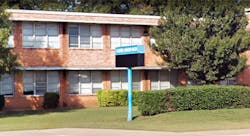Bond issue of nearly $1 billion approved in Arlington (Texas) district
Voters in the Arlington (Texas) district have approved a bond issue of nearly $1 billion that will pay for rebuilding four schools and constructing a competition football field and six competition softball fields.
The Fort Worth Star-Telegram reports that the $966 million propsal passed with 66.56% approval.
The district plans to rebuild Carter Junior High, Berry Elementary, Thornton Elementary and Webb Elementary, and close Roark and Knox elementary schools.
The school facilities that are being replaced average 61 years old.
Bond money also will be used for renovations and additions to accommodate state-mandated full-day pre-kindergarten classes and to upgrade playgrounds, gymnasiums and athletic fields.
The district, which offers half-day pre-kindergarten, expects the expanded program to double the required pre-K classroom space.
Texas requires school districts offer pre-kindergarten to students who are economically disadvantaged, have limited English skills, are homeless, have a parent in the military or who was injured or killed in action, are in foster care or have a parent who has received the Star of Texas Award — a commendation for first-responders.
The state law requiring the switch to full-day pre-kindergarten took effect with the start of the fall semester, but Arlington has been granted extra time to make campuses ready.
The age of some facilities was a key issue in teh bond referendum.
Campuses like Carter Junior High weren’t built with modern utilities or population in mind, says Kelly Horn, director of facilities for the district.
The school’s doorways, ramps and hallways are incompatible with the Americans with Disabilities Act. A nurse’s office, not much larger than a supply closet, has yellowed with age. In the library, students struggle with a slow internet connection.
The schools to be rebuilt were built between 1955 and 1960. The general practice is to build campuses to last 50 years, Horn said.
The population of Arlington has mushroomed from 44,775 in 1960 to 398,112, according to the U.S. Census Bureau. Horn says the planners in the district at the time the campuses were built did not anticipate such a large increase in the student body.
About the Author
Mike Kennedy
Senior Editor
Mike Kennedy, senior editor, has written for AS&U on a wide range of educational issues since 1999.
